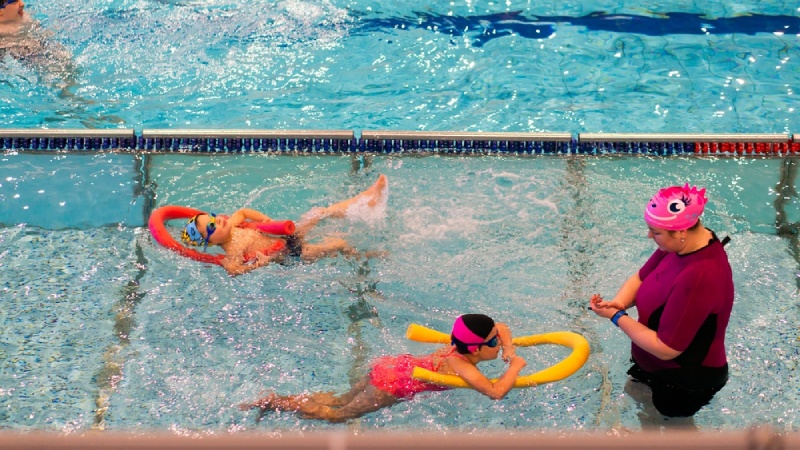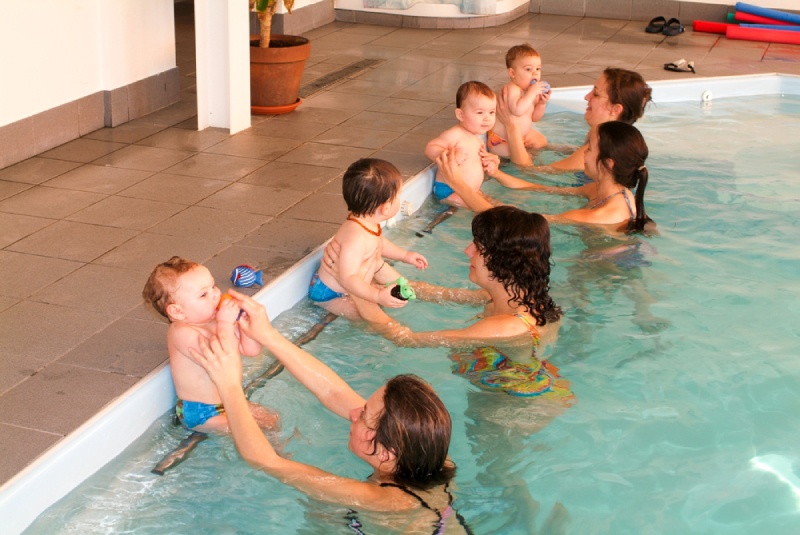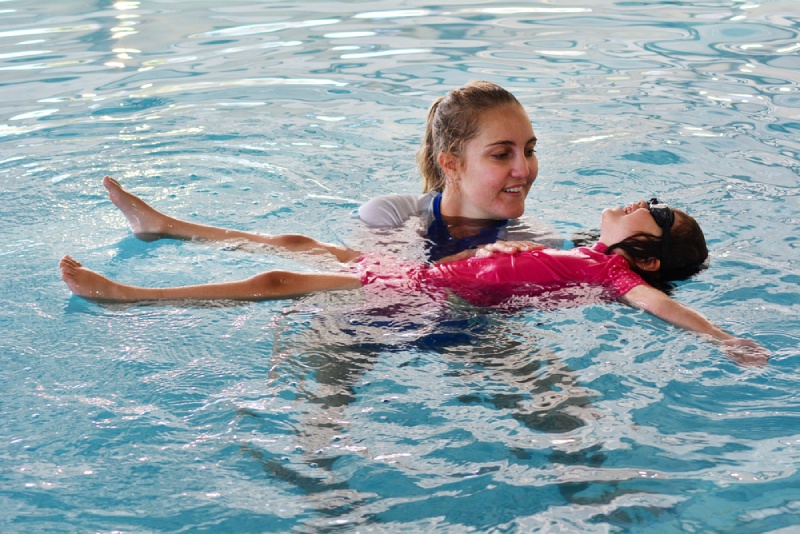
Learning to swim is an essential life skill that promotes safety, physical health, and emotional confidence.
But when is the right time to start teaching your child to swim? Here, we break down everything you need to know about assessing readiness for swimming lessons to the basic steps to take when a child is learning swimming. We will discuss the benefits of early swimming education, and tips for making the process enjoyable and safe.
Assessing Readiness for Swimming Lessons
Before diving into swim lessons, it’s important to assess if your child is ready to start. Every child is different, and their comfort with water, emotional maturity, and physical ability all play a role in determining when to begin. Here are key factors to consider:
- Comfort Level with Water: If your child enjoys bath time and is comfortable in the water, they might be ready for baby swim classes. Ensuring your child’s comfort with the water is essential before moving on to formal swim lessons.
- Building Confidence: Look for signs that your child is eager to explore water. Babies and young children who are curious about swimming and enjoy splashing around in shallow water may be ready for more structured lessons.
- Emotional Maturity: Emotional maturity is crucial. Your child should feel safe in a new environment, be able to listen to instructions, and cope with the minor discomforts that come with swimming, such as getting water in their face.
- Physical and Developmental Abilities: Physical readiness, including motor skills, can be a good indicator of when your child is ready for swimming lessons. Can your child move their arms and legs independently? Can they hold their breath for a few seconds? These are all important milestones for swimming.
- Friendly Instructors and Comfortable Environment: Choose instructors who are not only certified professionals but who also create a positive, encouraging environment. Kids should feel comfortable in their surroundings to build a positive association with swimming.
For younger swimmers, baby swim classes that incorporate flotation devices like pool noodles can help introduce them to the water in a playful, non-threatening way.
Basic Steps in Teaching Swimming
Once your child shows readiness, here’s a step-by-step approach to teaching swimming:
- Water Safety First: Before diving into strokes and techniques, it’s essential to teach your child basic water safety skills. Always supervise your child around water, and make sure they understand pool rules, such as no running or splashing excessively.
- Introduce Floating Techniques: Floating on their back is a crucial survival skill. Begin by helping your child float, starting with the support of flotation devices before gradually removing them as they gain confidence.
- Breathing Techniques: Teach your child to blow bubbles and hold their breath in a fun way, like pretending to be a fish or making silly noises in the water.
- Basic Arm and Kicking Strokes: Once they’re comfortable in the water, introduce basic arm strokes, like the dog paddle. Kicking techniques are also key at this stage. You can introduce kicking with the help of flotation devices, encouraging them to kick and move through the water.
- Formal Swim Lessons: While parent-and-child lessons are great for the early stages, eventually moving to formal swim lessons with a certified instructor will help your child refine their techniques and learn new skills like breathing while swimming.
- Survival Skills: It’s never too early to teach survival skills like treading water and knowing what to do if they find themselves in deeper water. Focus on building confidence and competence in a structured environment to increase their safety.
Benefits of Early Swimming Education

Introducing your child to swimming at an early age has several benefits, including:
- Physical and Developmental Benefits: Swimming promotes muscle strength, cardiovascular health, balance, flexibility, and coordination. Regular swimming helps your child build stamina and improve their overall fitness.
- Cognitive and Mental Health Benefits: Swimming is great for cognitive function, mental focus, and emotional development. It also helps reduce anxiety and boosts self-esteem.
- Safety: By teaching water safety skills from a young age, you reduce the risk of drowning and other water-related accidents. Early swimming education is an essential part of drowning prevention.
- Social Skills: Swimming lessons often take place in a group setting, providing your child with opportunities to develop social skills, build relationships with peers, and learn to work with others.
Best Age to Start Swimming Lessons
Nemo Swim School recommends that children can start parent-child swim lessons as early as six months old. This is a great time to introduce your child to water in a safe, nurturing environment. However, formal swim lessons can typically begin at age 3, depending on the child’s readiness.
While bathtime acclimation is an early start, the main goal is to focus on progressive skill development. With the right level of parental involvement and supervised pool practice, your child can progress in swimming safely and confidently.

Handling Reluctance to Swim
Some children may initially resist swim lessons. It’s important to be patient and understanding while encouraging them gently:
- Build Comfort: If your child is afraid of the water, try gradual exposure—starting with small steps like playing in the shallow end or holding onto the side of the pool.
- Encourage with Positive Reinforcement: Let your child watch others swim and praise them for any positive interaction with the water, no matter how small.
- Be Patient: Resist the urge to force your child into the water. Instead, focus on making swimming a fun experience that they can enjoy at their own pace.
Safety Tips for Swim Lessons
Swimming is an incredibly beneficial skill, but safety must always be the top priority. Here are some important safety tips:
- Certified Instructors: Ensure your child’s instructor is certified and experienced in teaching swimming, especially for young children.
- Lifeguards and Supervision: Always choose swim schools with lifeguards present. Even in structured lessons, accidents can happen, and having trained professionals on-site is vital.
- Small Class Environments: Smaller class sizes ensure that each child gets more attention and guidance. This is especially important when children are learning basic survival skills.
- Always Be Present: While your child’s instructor will guide them, it’s important to remain on poolside for safety. Your watchful eye helps ensure your child’s well-being and makes them feel supported.
Teaching your child how to swim is a rewarding experience that promotes physical fitness, safety, and confidence. By assessing their readiness, following a step-by-step approach to swimming education, and keeping safety top of mind, you’re setting your child up for success in the pool and beyond.
Remember, whether you start with baby swim classes or formal swim lessons, the key is to make it a positive and fun experience that helps your child thrive in and out of the water.